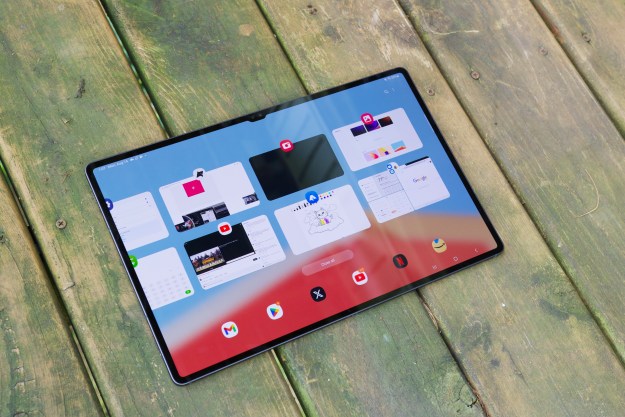Oppo is credited for several smartphone innovations, especially in the camera and fast-charging departments, and the list keeps growing each year.The company is currently hosting the two-day Oppo Inno Day 2021 event, where it showcased its custom “MariSilicon X” neural processing unit (NPU) on day one and teased two flagship phones launching next year, including the foldable Find N and the 2022 Find X. It also launched its monocle-style smart glass, the Oppo Air Glass, for augmented reality (AR) applications. On day two, the company also revealed its first foldable smartphone — the Oppo Find N.
The MariSilicon X NPU is set to debut on the Oppo Find X 2022, while the Air Glass will go on sale in China in the first quarter of next year. The prices are yet to be revealed, but Oppo has shared many details about the products to help set our expectations. Here is everything that was announced at the Oppo Inno Day 2021 event.
Oppo Air Glass
The monocle-style Oppo Air Glass is the first commercial smart glass from the company. Emphasizing “commercial” is pertinent here because the company has been exhibiting its pairs of smart glasses for the last two years of its INNO Day events, but both of these have only been available for developers to build AR applications.
True to its name, the Air Glass features a burdenless design and weighs just 30 grams. It features a detachable arm that attaches magnetically to the frame, and this design should allow users to add prescription lenses. Oppo currently offers half-frame and full-frame options, but you won’t be able to wear it over just any pair of glasses, although we might see the company bring out more designs in the future. Air Glass uses see-through sapphire crystal glass with an array of microLEDs in the display. It claims the tiny display can get as bright as 3 million nits and, therefore, should be useful for outdoor viewing.
The Oppo Air Glass features an in-house micro projector that can be used to project an image to an external surface. It uses a five-piece lens unit housed inside a metal tube for better heat dissipation.
The smart glass runs on the Qualcomm Snapdragon Wear 4100 platform, which is seen on several Wear OS smartwatches. The chipset also brings connectivity features such as Bluetooth, Wi-Fi, and GPS to the smart glass, while the detachable arm features a speaker and a microphone.

The user interface can be controlled using the touch bar on the side and also supports gestures like nodding or shaking the head for view and clear notifications. Besides touch and head movements, users can also control the contents on the Air Glass using hand gestures or with their voice.
The Oppo Air Glass is meant to be an extension to the smartphone, but it will be limited to Oppo phones running ColorOS 11 and above. It can also be used along with the OPPO Watch 2, which can be controlled with just hand gestures.
Besides support for notifications, weather updates, and turn-by-turn navigation, the Oppo Air Glass can also be used for real-time translation. It can automatically detect the language spoken by another person and display a translated version like a teleprompter. At present, it supports Chinese-English translations, and Oppo will add support for Japanese and Korean soon.

Oppo has announced that the Air Glass will only be available for users in China in black and white color options. The price of the product has yet to be announced. The company is also optimistic about offering AR-based shopping experiences in China in partnership with Chinese e-commerce platform JD and video content experiences with iQiYi, a Chinese streaming service.
MariSilicon X Custom NPU
Oppo also announced a custom neural processing unit (NPU) at the Inno Day 2021 event. The MariSilicon X combines an NPU with an image signal processor (ISP) and a memory subsystem. It is based on a 6nm process node and is specially designed for class-leading camera performance and features on flagship Oppo smartphones. The applications of the new NPU, as touted by Oppo, include HDR 4K recording, real-time A.I.-based processing in RAW, improved noise reduction, 4K Night Video mode, and an RGBW Pro Mode for Oppo’s RGBW (Red Green Blue White) sensor.

Oppo claims the ISP on the new NPU can record 4K video with a contrast ratio of 1,000,000:1 and 20-bit throughput, resulting in a 120dB dynamic range, which translates to higher contrast between the bright and dark areas on images and videos. Oppo has labeled this “Ultra HDR” and defines it as having four times greater dynamic range as compared to Qualcomm’s Spectra ISP on the Oppo Find X3 Pro.
The real-time RAW processing is also facilitated by the ISP on the MariSilicon X NPU. Oppo says the new NPU can apply HDR directly into multiple frames in a video being recorded directly in RAW. This implies that users will be able to record lossless 4K HDR videos directly from flagship Oppo phones launching next year. The advanced ISP also allows for A.I.-based enhancements, especially noise reduction features, to be added to high-resolution images and 4K videos in real-time. Oppo claims the NPU will help capture 30% more details as compared to a standard image pipeline on Android devices.
The support for high contrast ratio on MariSilicon X NPU allows for sharper and brighter photos and videos. Ultra HDR and better colors also allow each frame in the video to look as clear as an image and enable better capture of exposure during nighttime. The new NPU will enable 4K HDR Night Video on Oppo phones released starting in the spring, with the objective of capturing details on par with human vision.
The MariSilicon X NPU also extends support for Oppo’s RGBW sensor, which captures two images — one using an RGB grid and another using a grid of only white-colored pixels to map exposure correctly — simultaneously and then superimposes them for more precise exposure and accurate colors. Oppo says the RGBW captures 70% more texture on images than a regular RGB sensor, and this improvement allows for better pictures. Since the signals from the RGBW sensor can’t be read using regular systems on a chip, the technology is expected to be pretty much limited to Oppo phones for now, but OnePlus’ lineup can be expected to reap the benefits following its merger with Oppo earlier this year.

Lastly, the MariSilicon NPU is designed to circumvent any memory-related bottlenecks by using a multitiered memory architecture. By integrating the memory subsystem and the ISP into the NPU, Oppo aims to utilize the full potential of these processors without any restrictions due to the memory. by minimizing latency in transmitting data to and from the ISP, the integrated memory reduces the power consumption of the chip.
The first phone to feature the MariSilicon X NPU will be the Oppo Find X 2022 Edition, which will be launched in the first quarter of 2022. While this NPU is certainly the starting point, it remains to be seen if Oppo joins other brands in launching an entire mobile chipset tailor-made for Oppo phones.
Oppo’s retractable camera
Even though Oppo didn’t talk much about the previously teased retractable camera system during day 1 of the event, its official website does share more information about the utility of this moving camera. As expected, the retractable camera from Oppo will be used for zooming into objects. The system is designed to offer 2X optical zoom, with an equivalent focal length of 50mm.
The biggest advantage of this feature is that it will allow the primary camera to be used for 1x and 2x shots, thereby eliminating any compromises in terms of the picture quality in the telephoto mode. Oppo says the retractable camera system will be paired to a Sony IMX 766 sensor, allowing for equally good photographs and portrait shots with natural bokeh.
The retractable camera system is expected to be featured on the Oppo Find X 2022, along with the MariSilicon NPU.
Oppo Find N foldable phone
On the second day of the Oppo Inno Day 2021 event, the company shared details about its foldable smartphone — the Oppo Find N. Oppo has dabbled with flexible screens in the past, including the Oppo X 2021, a concept smartphone with a rollable screen that stretches to expand screen real-estate. The Oppo Find N, on the other hand, takes a tested approach with a midway fold similar to the Galaxy Z Fold lineup.

With its tagline “From Novelty To Necessity,” Oppo is teasing an experience on par with a regular smartphone — with the advantages but not the quirks of a foldable. The biggest change it aims to bring with the Find N is making the crease along the center 80% more obscure than previous foldable devices. The phone uses a 0.3mm thick sheet of ultrathin glass (UTG) over the folding screen, and Oppo says its “Flexion Hinge,” which is made of 136 different parts, allows the screen to be held at any angle between 50 and 120 degrees. Oppo is using a water droplet-shaped loop design that allows the fold to be accommodated when the phone is closed.

The Oppo Find N is smaller than the Galaxy Z Fold 3 and features an almost-square display inside that opens up to be 7.1-inches. This display has a refresh rate of 120Hz and a claimed peak brightness of 1,000 nits. Meanwhile, the screen on the outside measures 6.49 inches and features a hole-punch selfie camera. It also serves as a viewfinder when using the rear cameras, which include a 50-megapixel primary, a 16MP ultrawide angle, and a 13MP telephoto camera.
Despite its advantages in terms of a more seamless display, the Oppo Find N lacks any sort of ingress protection (IP) rating against dust and water. The Galaxy Z Fold 3, in contrast, features an IPX8 rating for protection against water.
On the inside, the Find N features a Qualcomm Snapdragon 888 chip instead of the latest Snapdragon 8 Gen 1. On the upside, thereis up to 12GB of RAM and 512GB of storage on offer. But on the downside, we don’t know for sure when it will be launched outside of China, where it costs 7,699 yuan (approximately $1,210) for the 8GB + 256GB variant and 8,999 yuan (approximately $1,415) for the 12GB + 512GB option.
Editors' Recommendations
- Oppo’s weird health tracker is a smartwatch without the watch part
- Oppo targets faster camera A.I. and better lowlight video with MariSilicon X chip
- Oppo may reveal AR Glasses and (maybe) a foldable phone at Inno Day 2021




